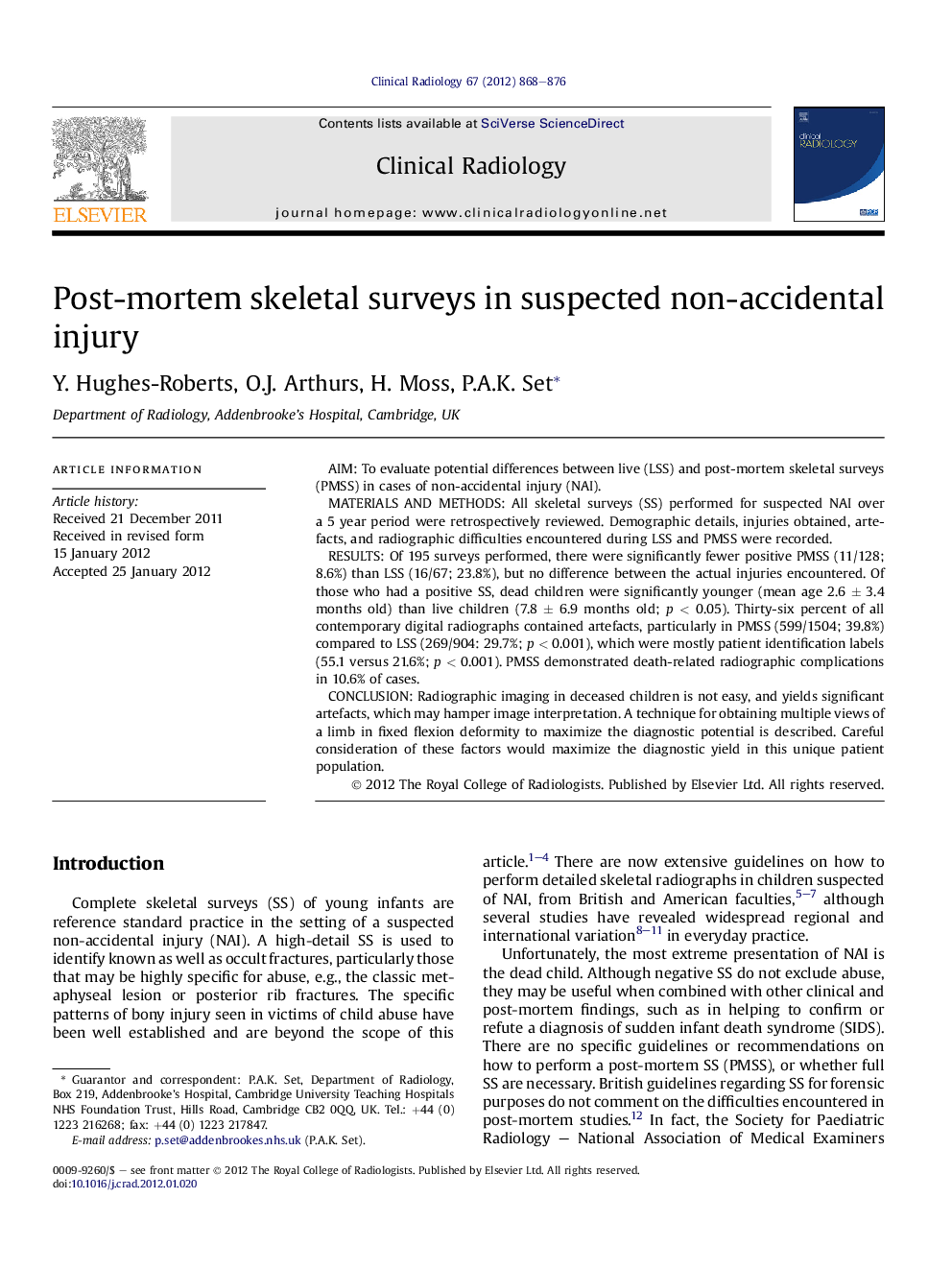| Article ID | Journal | Published Year | Pages | File Type |
|---|---|---|---|---|
| 3981995 | Clinical Radiology | 2012 | 9 Pages |
AimTo evaluate potential differences between live (LSS) and post-mortem skeletal surveys (PMSS) in cases of non-accidental injury (NAI).Materials and methodsAll skeletal surveys (SS) performed for suspected NAI over a 5 year period were retrospectively reviewed. Demographic details, injuries obtained, artefacts, and radiographic difficulties encountered during LSS and PMSS were recorded.ResultsOf 195 surveys performed, there were significantly fewer positive PMSS (11/128; 8.6%) than LSS (16/67; 23.8%), but no difference between the actual injuries encountered. Of those who had a positive SS, dead children were significantly younger (mean age 2.6 ± 3.4 months old) than live children (7.8 ± 6.9 months old; p < 0.05). Thirty-six percent of all contemporary digital radiographs contained artefacts, particularly in PMSS (599/1504; 39.8%) compared to LSS (269/904: 29.7%; p < 0.001), which were mostly patient identification labels (55.1 versus 21.6%; p < 0.001). PMSS demonstrated death-related radiographic complications in 10.6% of cases.ConclusionRadiographic imaging in deceased children is not easy, and yields significant artefacts, which may hamper image interpretation. A technique for obtaining multiple views of a limb in fixed flexion deformity to maximize the diagnostic potential is described. Careful consideration of these factors would maximize the diagnostic yield in this unique patient population.
